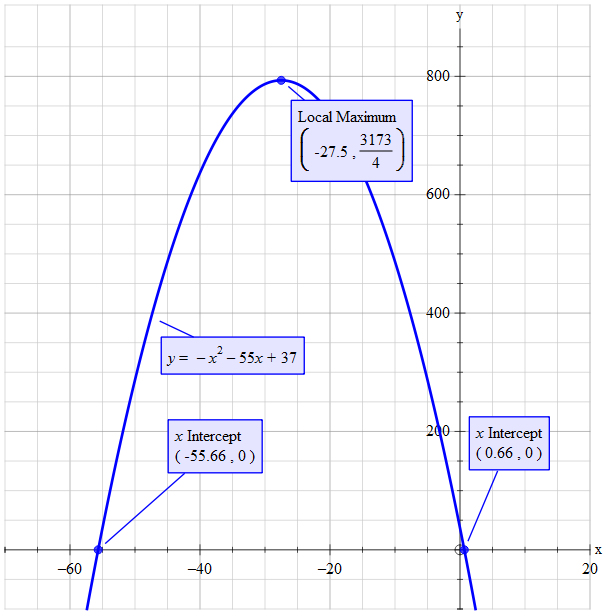How do you find the zeros, real and imaginary, of #y= -x^2-55x+37 # using the quadratic formula?
2 Answers
Explanation:
When I first came across the quadratic formula I decided that I really had to commit it to memory. So I wrote the thing out every time I answered a question of this type. I did it so often that it is really 'burnt' into my memory. This is one of those equations that is really worth remembering if you can.
~~~~~~~~~~~~~~~~~~~~~~~~~~~~~~~~~~~~~~~~~~~~~~~~~~~~
The coefficient of
The constant of
Compare to standard form
Setting
Where
Note that as we are applying plus or minus to the root it does not matter that the denominator is negative. So write it as positive just to make things tidy.
The only whole number factors of 3173 are: 1 and 3173; 19 and 167. so we can not simplify the root any further than it is.
Thus the exact answer is:
Approximate answers are:

Zeros are
Explanation:
For a quadratic polynomial
quadratic formula gives the zeros as
Hence for
and hence zeros are
=
=
Note

